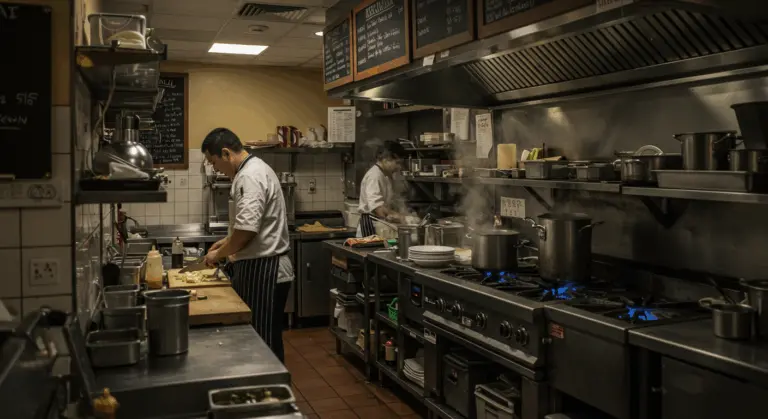Which Type of Influencer Has the Smallest Following but Highest Engagement Rate?
Understanding Influencer Tiers – Who Are They?
Understanding these tiers is essential for brands seeking to identify influencers who align perfectly with their marketing objectives, budget constraints, and target demographics—forming the foundation of successful campaigns.
The influencer landscape spans from intimate NATO and micro-influencers with carefully cultivated smaller followings to prominent macro and mega-influencers who reach audiences numbering in the millions. Each tier offers unique advantages and challenges, with significant variations in engagement rates, authenticity perception, and cost-effectiveness. However, an influencer’s follower count rarely tells the complete story of their marketing prowess.
NATO-Influencers – The Smallest but Most Engaging
NATO-influencers represent the smallest tier in the influencer hierarchy, typically having between 1,000 and 10,000 followers on their social media channels. Though their audiences may seem modest, NATO-influencers possess remarkable influence within their tight-knit communities, often achieving the highest engagement rates across all influencer categories.
What sets NATO-influencers apart is their genuinely authentic connection with followers—relationships that feel more like trusted friendships than traditional marketing channels. Their credibility, paired with specialized expertise in specific niches or local communities, transforms their recommendations into powerful endorsements that audiences perceive as honest counsel rather than sales pitches.
Micro-Influencers – A Step Above NATO
Micro-influencers occupy the next tier in the influencer spectrum, with follower counts typically ranging from 10,000 to 100,000. Though they command larger audiences than their NATO counterparts, micro-influencers haven’t sacrificed the authenticity and genuine relatability that makes smaller-scale influencers so effective for marketing.
These creators typically cultivate their following around specialized niches, building authority and attracting highly concentrated audiences—ideal for precision-targeted campaigns.
True, their engagement rates may dip below NATO-influencer levels, yet they consistently outshine larger tiers. This creates a balance that balances meaningful reach with authentic audience connection.
Why Engagement Rate Matters in Influencer Marketing
Engagement rate is the most valuable influencer marketing metrics—often more important than raw follower counts because it reveals the true quality of connection between creator and community.
High engagement rates signal that content doesn’t just reach audiences—it moves them. It transforms passive scrollers into active participants, inspiring genuine action rather than fleeting attention.
From a marketing perspective, high engagement signals strong conversion potential. This explains why savvy brands now chase engagement over sheer numbers—a smaller but genuinely engaged audience consistently outperforms vast crowds of passive observers.
Measuring Engagement – Key Metrics to Consider
Smart marketers dig deeper than surface-level engagement metrics, seeking a nuanced understanding of how audiences truly interact with content. While the standard engagement rate formula (total engagements divided by followers, multiplied by 100) provides a useful baseline, more sophisticated analysis uncovers valuable insights.
Consider this: NATO-influencers on Instagram achieve an impressive 2.19% engagement rate—dramatically outpacing their larger counterparts. This highlights a key trend: as follower counts rise, personal connection and engagement rates typically decrease.
Beyond the overall rate, brands should consider the quality of engagement:
-
Qualitative Comments: Questions or tagged friends show deeper interest than simple emojis.
-
Content Saves: Suggest intent to reference information later, possibly for a purchase.
-
Shares: Reveal how compelling followers find the content.
-
Click-Through Rates (CTR): Provide direct insight into conversion potential.
Timing tells its own story. How rapidly does an audience respond to fresh content? How long does that engagement momentum sustain itself? Sustained interaction indicates content with lasting impact rather than momentary appeal. With careful analysis, brands can distinguish between influencers who simply attract crowds and those who cultivate communities genuinely receptive to brand messages.
Choosing the Right Influencer for Your Campaign
Finding your perfect influencer match demands a methodical approach built on several critical pillars:
-
Campaign Goals: Clearly define your objectives, whether building brand awareness, driving conversions, or establishing niche credibility.
-
Budget: Smaller influencers often provide better value—NATO and micro-influencers frequently deliver superior ROI compared to their expensive mega-influencer counterparts, whose massive but detached audiences may scroll past without genuine interest.
-
Audience Alignment: Ensure the influencer’s followers match your target demographic in terms of age, interests, location, and behavior.
-
Platform: Choose influencers who excel on the social networks where your target audience is most active.
-
Authenticity: Prioritize influencers whose personal brand genuinely complements your product, as audiences can easily detect insincerity.
Strategies for Collaborating with Influencers
Effective collaborations go beyond basic promotional posts, venturing into creative territory that feels authentic rather than transactional. Use strategies that leverage each influencer’s distinctive connection with their community:
-
Hyperfocal Campaigns: Use NATO-influencers for community-focused marketing that drives local engagement and foot traffic.
-
Creative Freedom: Allow influencers to shape the content to ensure it feels authentic and resonates with their audience. Consider formats like account takeovers.
-
Data-Driven Optimization: Regularly analyze engagement metrics to identify which content, timing, and messaging performs best, and refine your strategy accordingly.
-
Long-Term Partnerships: Build sustained relationships through ambassador programs or exclusive launches. This fosters deeper credibility than one-off promotions.







